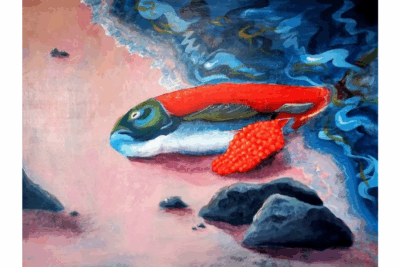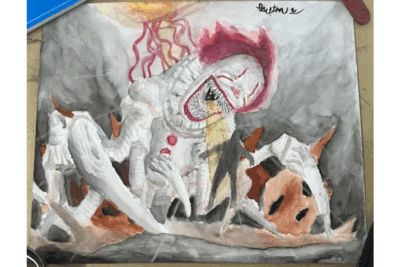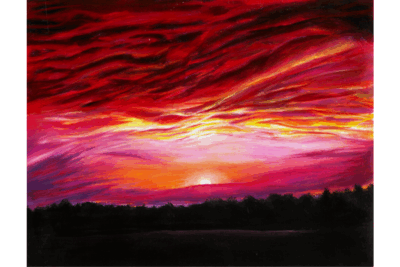Walking through Goshen College’s current Senior Art Exhibit, you’ll notice a number of posters in red and white that belong to a series titled “Comfort Women.” The ridged lines and structures of the posters seem unable to hold together the content presented.
“You can’t contain horror in structured spaces,” said senior Shina Park, creator of the series.Park is an art major at Goshen College from Vancouver, Canada. With the combination of her Korean heritage, her passion for social justice and her graphic design skills, Park presented the topic of comfort women to the Goshen community. Comfort women were women and young girls from throughout Asia, most of them from Korea, who were forced into sex slavery for the Imperial Japanese Army during World War II.
The issue regarding the comfort women is a current, multidimensional topic. On one side, the Japanese government continues to debate the military’s involvement in the coercion of the comfort women, which was stated in the Kono Statement, released by Japan’s chief cabinet secretary Yohei Kono in 1993. The government also sees the activism on the issue as an act that provokes further deterioration of the already difficult relations between the two countries. However, these women had remained silent for fifty years before Kim Hak-Sun stepped forward and gave a public testimony of her life as a comfort woman in 1991.
“It’s the problem regarding the culture,” Park said. “In most Asian countries, as women, when their bodies were violated, they were stigmatized.”
From an estimated 200,000 comfort women, only about 200 of them have come forward about the issue. There are only 59 known survivors, and most of them are now in their nineties. The age of these remaining survivors is the main pressure on the call for acknowledgement and a formal apology from the Japanese government.
Two summers ago when Park participated in the Seoul International Book Fair in South Korea, an event that features works of different artists and writers, she discovered a book on comfort women by a silk-print artist. Inspired by the work and the activism on the issue, she chose it as the focus for her senior exhibit.
The process began last December when Park started researching news articles, government reports and testimonies on the issues. She then spent most of the semester focusing on the editing phase. The posters went through at least three to four editing processes to reach their final form. Red dominates the pieces. According to Park, she chose the color because it represents the color of the Japanese flag and it is an alarming color that fits with the purpose of her work.
“It’s like a stop sign,” she said. “I want people to stop and look at it and think about it.”
The series consists of five pieces and is organized in three parts. As an introduction, a poster titled “Portrait” shows a woman on a tatami mat with a big red sun behind her back, portraying a typical scene of a “comfort station.” The middle part of the series tells the audience what had happened in the comfort stations. In a piece called “Memory Game,” Park summarizes elements of the women’s experiences by combining simple illustrations of objects such as a knife, a condom, a cuff and little excerpts describing the use of them in the comfort station.
“Objects trigger memories,” she said. “I wanted the audience to see the objects from the points of view of the comfort women.”
The last piece of the series features an image of a dove, symbolizing hope.
Artists are often concerned with beautiful things and are expected to capture beautiful things. But Park believes that art should also play a role of raising awareness and influencing people’s perspectives. That means that sometimes an artist should choose to portray reality and difficult subjects.
“What I hope to do is to evoke horror in the audience,” Park said. “There’s nothing beautiful about blood. There’s nothing beautiful about pain.”
She believes that visual art can be an agent for social change.
“If you want to change any action of any individual, you have to start from the perspective and the way that person sees things,” she said.
The “Comfort Women” series will be displayed again at the Combined Senior Show on April 19 in the Goshen College Music Center’s Hershberger Art Gallery.


